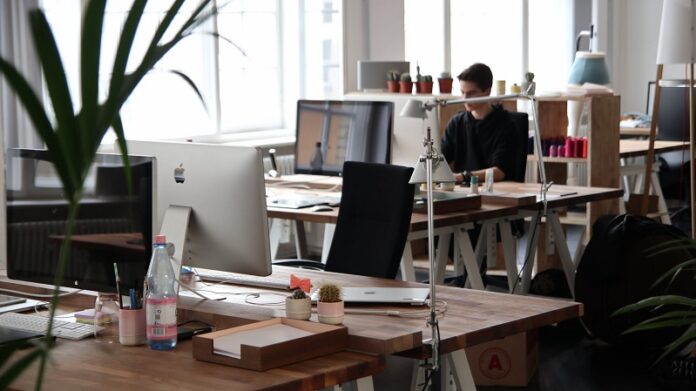It might be challenging enough to discover office space. Still, for individuals new to the commercial property business, it can take a lot of work to sufficiently comprehend all of the industry terminologies to calculate your office space prices.
To determine these costs and negotiate rates, it is always ideal to plan wisely.
When you determine how much office space you require, thorough planning is required. Budget busters can have either excessively little or too much room. The wrong size of an area can disturb your operations or at least make them more challenging, but there are several strategies you can use to get it exactly right.
How Can You Calculate the Workspaces You Have to Provide?
You must first evaluate your current status before determining your objectives for the expansion of your company over the following few years. To establish how big or small of a place you need, you must ask yourself a few questions. Remember to plan for your company’s growth potential.
Consider how many employees you have, how many common and private spaces you need, the length of your lease, and your projected rate of business expansion.
You only need to budget for work zones if the room is already segregated with office spaces, kitchens, and management departments. However, remember to plan for potential future hires.
Asking yourself the following questions should help.
- How many employees do I have right now?
- Would each employee require their own desk, or is office sharing an option?
- Should I expand my staff in the upcoming years?
- What time frame do I have to add the staff?
- Will I be hiring more executives, office workers, or salespeople?
Evaluating How Much Room You’ll Need
One of your worries may be how many workspaces you would need if you are planning to rent office space for your business? It needs to have a proper answer to this question, but there is general consensus that can help you plan the arrangement of your office.
Workspaces must have sufficient open space for employees to roam around, and easily access their workstations. Every room must have enough height, floor area, and open space for the security, protection, and comfort of every employee working there.
It should be at least 120 square feet per individual in general. Accordingly, the typical individual workspace should be 50 square feet, with the remaining space used for cabinets, meeting spaces, a dining area, roaming space, and office supplies.
A typical space of 80 to 120 square feet per employee offers pleasant working and ample room to move around in most circumstances.
The amount of space you should allocate for shared spaces and meeting rooms should be discussed in this part, along with an estimation of the square footage required for each workplace component.
Meeting Rooms and Shared Spaces
What would you say about your space’s shared areas? Are they enormous, with many conference rooms and a spacious kitchen, or small, with just a single conference hall and perhaps a break room?
Energetic common space design is crucial because it can affect how people move through an office. Additionally, it may impact how cohesive and team-oriented an office feels and how productive employees are.
Consider the values you want your common areas to convey and the plan portions that encourage social interaction. Space availability is frequently a significant constraint when planning the common areas of your workplace or you may consider dallas office spaces for rent to expand your workspace.
You may maximize your limited floor space by creating more blended rooms if your organization has a tiny overall footprint or little room for common spaces.
The busier the office environment, the bigger the percentage of your total office space that should be devoted to common areas.
- A single office space with all ten employees is usual for smaller, more compact offices.
- Consequently, a 50-person workplace requires five conference rooms in addition to individual workstations and common areas.
- Less shared workspace is required for more conventional offices with 250–300 square feet per person.
- One workspace for every 20 employees is the usual ratio if the place is undeniably big. A 50-person workplace would only require two or three conference rooms in this capacity.
Difficulties with Calculating Workspaces Per Individual
The quantity of the office space required per employee is easier to determine if your organization has a workplace structure where most workers spend most of their hours in dedicated workstation booths.
In such a situation, based on the usual design of the cubicle sections, you may roughly estimate how much floor space each worker uses, especially if you intend to rent office place dallas in the future.
Considering Shared Spaces
There is also the extra challenge of budgeting for common areas, regardless of whether your ideal workplace setting is one with partitions or one that is spacious and comfortable. Employees aren’t practically chained to their desks all day.
Thus, the communal space per person must also consider using kitchens, restrooms, passageways, recreation facilities, and eating places.
Estimating the Required Office Space per Worker
This may be more complex than you may like. Calculating the required square footage per employee is sometimes a straightforward estimate, so that statistics can be used as a reference point.
These requirements have been modified in the COVID-19 era to adapt to social separation policies and workplace safety regulations. Several businesses are reducing their in-office maximum capacities to avoid employee health issues, increasing the typical square footage allotted per worker.
Places for Executives
Although some CEOs and other administrators are strongly committed to equality, they may choose to work with the rest of the group. But, bosses typically have private rooms in most businesses.
Certain workers with larger workstations, or independent offices, should be subtracted from the primary calculation below. Instead, figure out each area individually, then add it to the other sum.
The same concept also holds for some other “special” personnel. For example, you might have a large greeting area with just room for one person, but it has additional space to house the secretary’s equipment.
Size Approximation of Office Areas
You have a mental picture of how you envision your office overall. It might have a typical design with individual offices and a few conference rooms or a highly effective layout with lots of communal spaces for teamwork.
Now that you can picture the lobby, office cubicles, meeting rooms, and staffrooms, it’s time to ask yourself how much real space do these places occupy? Will you have adequate space for all the necessary shared areas?
Get an idea of the typical sizes for various kinds of work zones within your entire office space from the information below:
- Large private or collaborative office: 200–400 square feet.
- Medium individual or group office: 150 to 250 square feet.
- Mini Private Office: 90–150 square feet.
- Workspaces in open areas: 60 to 110 square feet per employee.
- Work team Areas: 80 to 100 square feet per worker.
In addition, the following estimations are given to help you assess how much space you need, and to help you estimate how much room components an office setting can occupy, such as:
- Each seated person in the conference room: 50 square feet plus 25 square feet.
- Reception Facilities: 100 to 200 square feet for each waiting individual.
- Snack Room: 75 square feet plus 25 square feet for each sitting person.
- Hallways and corridors make up 20 to 30 percent of the total usable areas in the room.
- Correspondence Room: 125 square feet.
- Room for files: 200 square feet.
You may grow your company without encountering expensive obstacles by considering your future expansion. Understanding how many people you already employ can help determine how much workspace you need today to conduct your firm comfortably.
The open space concept, which does not include private rooms, is at the lower end of the spectrum. Desks or workstations are typically arranged in typical call centers and representative offices.
A normal personal office design is at the top of the scale. For instance, law offices exclusively have private offices, spacious meeting rooms, and support spaces like bookshelves, pantries, and storage rooms.
Further Recommendations
Although you’ve given a basic guideline for workspace square footage above, it can be challenging to figure out. It, again, depends on your company’s priorities. Particularly in the COVID-19 period, the following considerations should be made:
- Will you require additional room for social distancing?
- How many workers are present at any particular time in the office if you’re using a flexible working method?
- Will you use a hot physical component paradigm, or have designated desks?
- Are there any rules for the social distance that you must adhere to in public spaces? You should have more floor space for these.
With this information, you can estimate the surface area guiding your exploration for additional space. Ensure that your team has all the room it needs to succeed. Being deliberate about the areas in your workstation can increase worker efficiency and staff happiness with your business, and the company as a whole.
Final Thoughts
Future employment trends, and changes in employee work preferences are hot topics. Flexibility and forward-thinking are essential when deciding how much office space to allocate to each employee, and the type of atmosphere to create.
Everyone likes a smaller personal area in return for more communal places, which translates to less square footage per individual. It is great news for those people who have to cover the price.
Read Also : 7 Ways To Improve Safety in Your Office Building






























































